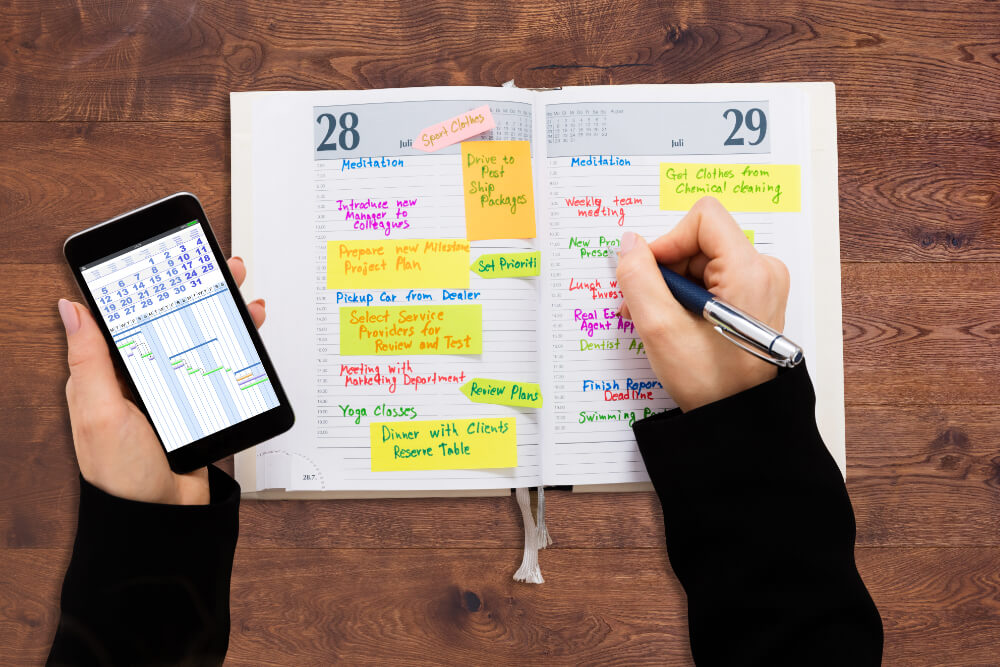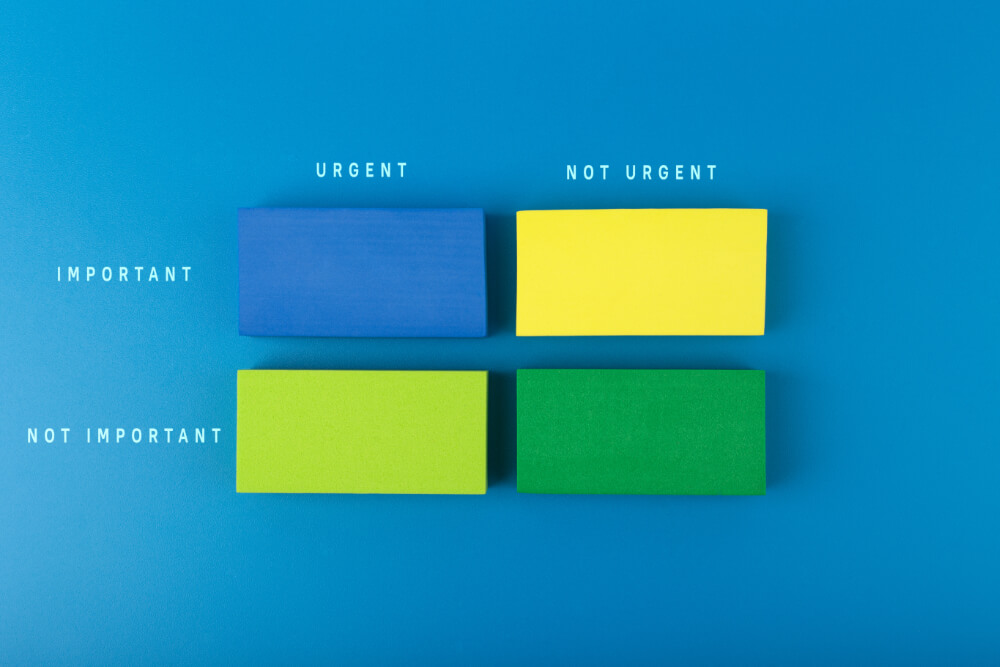Whether you work in an office or from home, we all know how important it is to be motivated and productive to make those hours count.
So many factors contribute to our productivity, from our health (WHO says a healthy workforce can be up to 20% more productive) to sleep (sleep deprivation can lead to a 37% decrease in productivity) to engagement at work (Gallup found engaged employees were 21% more productive than their disengaged counterparts) to how you structure your work day (McKinsey found the average employee spends 28% of their workweek dealing with emails and only 39% of their time on job-related duties).
But the "how" of productivity can be harder to figure out...

When life throws unexpected hiccups into our day (or week), we need to have tools that help us plan, prioritize, and stay focused so things don’t go completely off the rails.
There are many different productivity tools and methods - and there's no one-size-fits-all solution. The trick is finding ones that work for you, especially when plans change.
The best-laid plans of mice and men, often go awry.
Robert Burns
Scottish Poet and Lyricist
I’m in Charleston, and before you picture me sitting on my front porch sipping sweet tea and chatting with my neighbors, let me share that I’m mid-move. I planned to be here for three days and thought I’d be working most of that time. That did not happen.
Originally, the first part of the move was to happen in late June - giving me a whole week to unpack. Then, my husband’s aunt passed away. I spoke to M, who owns the moving company, and he shifted all sorts of things around so that we could move in late July, but it left us with an incredibly tight deadline. However, he and I agreed we were up to the task.

But then, after a three-hour delay due to an accident, when the movers finally arrived in Boston having driven up from South Carolina, we were under a flood watch, a tornado warning, and a severe thunderstorm warning. Not exactly ideal weather to be walking up a metal ramp loading heavy furniture onto a truck when you could hardly see two feet in front of your face.
The team and I were ready though. M and I had talked through various contingency plans and had a plan in place and an agreement that the team’s safety was of paramount importance.
Having productivity tools to fall back on even when events beyond your control happen allows you to stay on top of important tasks, even amidst the chaos.
A List Of Productivity Tools For You To Mix, Match, and Layer
Below are our top 10 systems... all you need to do is experiment to find out which productivity tool(s) work best for you:
#1 Batching
Batching is where you lump similar tasks together. That could mean prepping all your meals on Sunday, so you don’t have to worry about what to eat during the week. It might also mean scheduling an hour each day to go through all of your emails.
Batching helps to reduce cognitive load and prevents context switching. A University of California, Irvine study found that context switching takes 23 min and 15 sec to return to your original task.

#2 Pomodoro
The Pomodoro method has bursts of focused time punctuated by frequent breaks. You set a time and work for 25 minutes without interruptions, then take a 5 min break and repeat.
#3 Time Blocking
Time blocking refers to blocking out time in your schedule to complete certain tasks. It doesn’t help you prioritize, but it will be useful for recurring tasks. Also, because you have dedicated time to focus on one task, you’ll be less likely to multi-task, which the APA says can reduce productivity by 40%.

#4 Kanban
This method splits everything into three lists. First, your to-do list. Secondly, your “doing” or work-in-progress list. Finally, your “done” list. While it can be super satisfying to slide items onto the “done” list, it can also be overwhelming to see everything listed this way, and it doesn’t help you prioritize.
#5 Eisenhower Matrix
If you struggle with prioritizing, this method can help. You group everything into four categories:
1. Urgent and important (do these things first).
2. Urgent but not important.
3. Not urgent and important.
4. Not urgent and not important.

#6 Eat The Frog
This method has a memorable name, and it challenges you to start the day by tackling the most important or most challenging task first. The idea is that once you’ve got that out of the way, the rest of your day should feel easy.
#7 SMART Goals
Goals that are specific, measurable, achievable, relevant, and time-based can help you break down bigger projects into smaller tasks and create deadlines to make sure you stay on track.
#8 Must, Should, Want
This method breaks down everything you need to do into three lists. I must, I should, I want. You can focus on the I must list first and perhaps reward yourself with items from the I want list when you finish a task.
#9 Getting Things Done
The 'Getting Things Done' system is a bit more complex but becomes a framework you can adopt for work and home.
It begins with capturing - by creating lists where everything you need to do gets written down. You could have a list for home, work, specific projects, references, well-being, etc.
Next is clarify - you look at your lists and anything that can be done in 2 minutes or less gets done now. Then ask what can be delegated and assign it to someone else. Delete old tasks. And file non-actionable items under reference.
Then you organize - you may want to use something like the Eisenhower Matrix to help you prioritize action items.
Next comes engage - which means it’s time to actually do the work.
Finally, you review once a week - it’s the time that you set aside to clarify and organize.

#10 Zen To Done
The final method we’re sharing is the 'Zen to Done' method, which in some ways simplifies and builds off the Getting Things Done framework.
Zen to Done is about cultivating ten habits to help you plan, prioritize, and stay focused. You’re only meant to work on one or two habits at a time so it doesn’t feel overwhelming, and the end goal here is to change your behavior so that staying productive comes more naturally.
It can be challenging to stay focused and engaged with our work, especially when unforeseen events throw a monkey wrench in our carefully laid out plans. However, I’ve found that having productivity tools that I know I can rely on and work for me helps me to stay on track even when things get chaotic.
And, for the record, I did get a chance to chat with one of my new neighbors who stopped by to welcome us with a plate of warm brownies. Love that!
Determining the best way to boost productivity can be complex, as there's no universal answer. We’d be delighted to guide you or your team towards more efficient time management.


